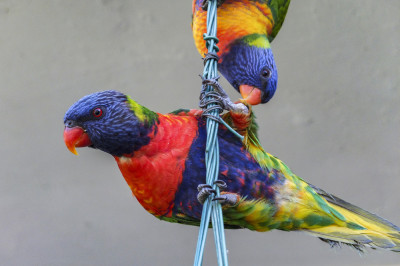1. Respect Your Bird's Space and Routine
When bringing a new bird into your home, it's crucial to respect their space and daily routine. Give them time to acclimate to their new environment without overwhelming them with attention. Observe their preferences, such as preferred perches and sleeping habits, to ensure they feel comfortable.
2. Gradual Approach
Begin the taming process by taking a gradual approach:
-
Step 1 - Observation: Spend time near your bird's cage, speaking softly and offering treats through the cage bars. Allow your bird to become accustomed to your presence.
-
Step 2 - Offer Treats: Use treats as a way to associate your presence with positive experiences. Offer their favorite treats from your hand or a designated treat dish.
-
Step 3 - Slow Movements: Avoid sudden or fast movements that can startle your bird. Move slowly and calmly around their environment.
3. Building Trust Through Handling
Once your bird is comfortable with your presence, you can start the process of handling:
-
Step 4 - Hand Training: Gradually introduce your hand into their environment, allowing them to approach it voluntarily. Offer treats and positive reinforcement when they do.
-
Step 5 - Step-Up: Teach your bird the "step-up" command, where they step onto your finger or hand when prompted. Use gentle pressure on their lower chest to encourage this behavior.
-
Step 6 - Short Handling Sessions: Keep handling sessions short at first to avoid overwhelming your bird. As they become more comfortable, gradually extend the duration of handling sessions.
4. Building a Bond
Building a strong bond with your bird is essential for a happy and healthy relationship:
-
Step 7 - Verbal Interaction: Speak to your bird regularly in a soothing and gentle tone. Birds often enjoy the sound of human voices and may even mimic words or sounds.
-
Step 8 - Playtime: Engage in playtime with your bird, using toys and interactive games. This not only provides mental stimulation but also strengthens your bond.
-
Step 9 - Mutual Trust: Show your bird trust by respecting their boundaries. Avoid forcing interactions or handling when they are not receptive. Recognize and respond to their cues and body language.
5. Consistency and Patience
Taming and bonding with your bird is a gradual process that requires consistency and patience. Every bird is unique and may progress at their own pace. Avoid rushing or pushing your bird beyond their comfort zone, as this can lead to setbacks.
6. Positive Reinforcement
Use positive reinforcement techniques to reward desired behaviors. Offer treats, praise, or affection when your bird responds positively to handling or interacts with you in a friendly manner. Positive reinforcement reinforces trust and encourages your bird to repeat these behaviors.
7. Seek Professional Guidance
If you encounter challenges or behavioral issues during the taming and bonding process, consider seeking advice from an avian veterinarian or a certified avian behaviorist. They can provide expert guidance and strategies tailored to your bird's specific needs.
Conclusion
Taming and bonding with your bird is a journey that requires time, patience, and understanding. By respecting your bird's space, taking a gradual approach, and using positive reinforcement, you can build a strong and trusting relationship that enhances the happiness and well-being of both you and your feathered companion. Remember that the journey of bonding with your bird is a lifelong process, and each day brings new opportunities for strengthening your connection.







